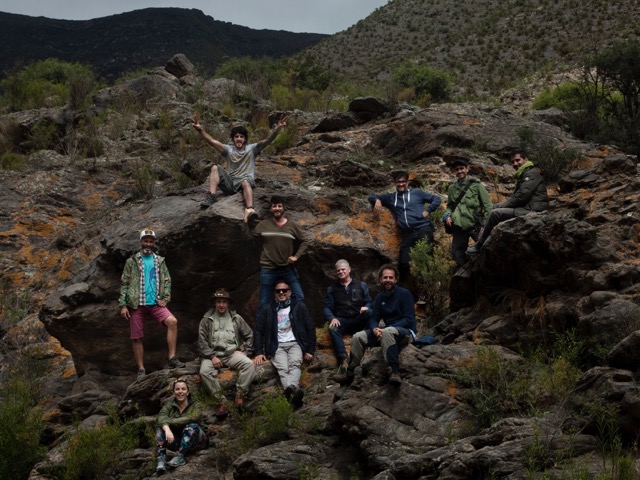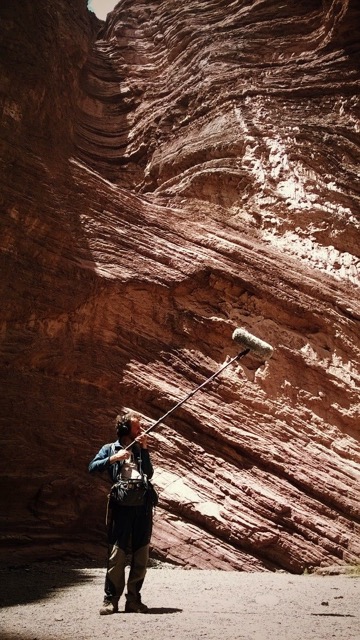
With BAFTA Awards, Golden Globes, and multiple Oscars for his film scores (Babel, Brokeback Mountain), Gustavo Santaolalla is recognized the world over for his incredible compositions. For his recent documentary series Qhapaq Ñan (translated in English as “Unwinding the Road”), which presents a musical journey along the Inca Trail, Gustavo brought along fellow Argentinian Rodrigo Merolla as his trusted sound mixer. Capturing the sounds and the musical authenticity of this region, Rodrigo’s skill and ingenuity was tasked at nearly every turn of the road. The final results are no less magnificent than one might expect of Mr. Santaolalla and his collaborators. From ruins at 4000 meters high, beside a river at the cordillera, and a host of unique locations along the way, Unwinding the Road is cultural music exploration of the finest grade. This production presents the way that those whom are indigenous to this area interact with nature and the musical relationship that has formed. Viewing this documentary series is a mind and spirit expanding experience for the audience as well as those involved in creating it. Mr. Merolla confirms, “Music and travel are my passions. This project combines both, so that was enough to make me happy. Even better was working with Gustavo Santaolalla, an artist with such a tremendous career. Putting myself at the service of his music, to feel useful in it and be recognized in my work, the making of Qhapaq Ñan was an amazing experience for me.

From its inception, Unwinding the Road was designed to be a sensory interactive experience rather than simply the display of people and places of this part of the world. Mr. Santaolalla understood that the surroundings and the people who have lived along the Inca Trial for so long have a way of life which differs drastically from that of the rest of the world. In communicating their connection with nature, the identity of these people offers possible different paths for so much of the urbanized world. Gustavo visits wild and often sacred places throughout the series, making music in varied scenarios with traditional, ancient, or unconventional instruments. Recording these instruments and performances required an equal amount of improvisational skill. Rodrigo imparts, “A large part of the musical search went through acoustics and how that music bounced in a certain place, whether it was a canyon, or a plain of height, or a valley. Gustavo asked me to look for ways, to invent them if needed, and record those responses that the environment gave us. The work involved a lot of experimentation and using all the tools that I hadn’t found where to try yet. I remember that in Tastil, at an archaeological site, there were some sonorous stones. These stones were discovered to be in tune and were used to make music. This fascinated us and Gustavo immediately began to rub and hit them. I quickly put some microphones here and there, and that music ended up almost exactly as it is on the album with the soundtrack of the series. Of course, he supervised all the results; Gustavo is an amazing music producer (Gustavo Santaolalla has won two Grammy Awards and fifteen Latin Grammys) so hearing his opinion about my work was a gift.

What is so starkly evident, other that the respectful presentation of the people featured in Unwinding the Road, is how the sounds which surround us impact our emotional state. There is a sound palette that exists in this region which is absent in the lives of all who view this series. Not only the physical location, but the audio-emotional identity of the area is a destination well worth visiting. From the sound stones of Tastil to a popular carnival in Jujuy, the spectrum of sounds and moods is vast. Through the heart of the people and the land, audiences may begin to perceive that life is not only as they now know it. One of the most cinematic moments of Unwinding the Road is when Gustavo performs a solitary a cappella concert on a hand drum in a canyon known as the Devil’s Throat. Rodrigo Merolla describes, “It was a very moving moment. Gustavo performed an old folk song from northern Argentina called a ‘baguala.’ He accompanied himself on an ancient hand drum from the area. The Devil’s Throat is a kind of tight canyon with very high walls and special acoustics, a natural amphitheater, and we went specifically for its acoustics. It was just voice and rhythm but the canyon did the rest.” 360 degree views of this one-man concert in nature’s concert hall communicates everything The Unwinding Road is about; respect and appreciation for the people, sights, and sounds of a part of the world which clings to its own identity.
Writer: Arlen Gann


Be the first to comment on "Qhapaq Ñan: The Sounds of the Inca Trail"